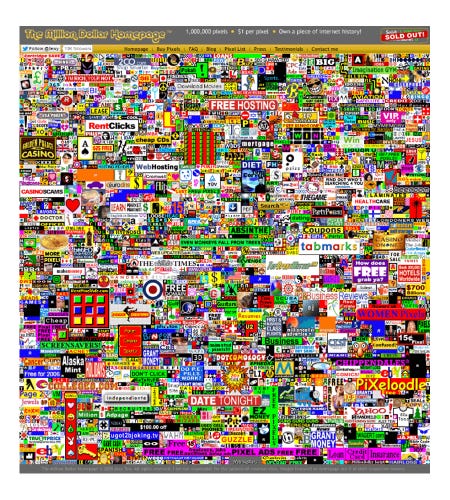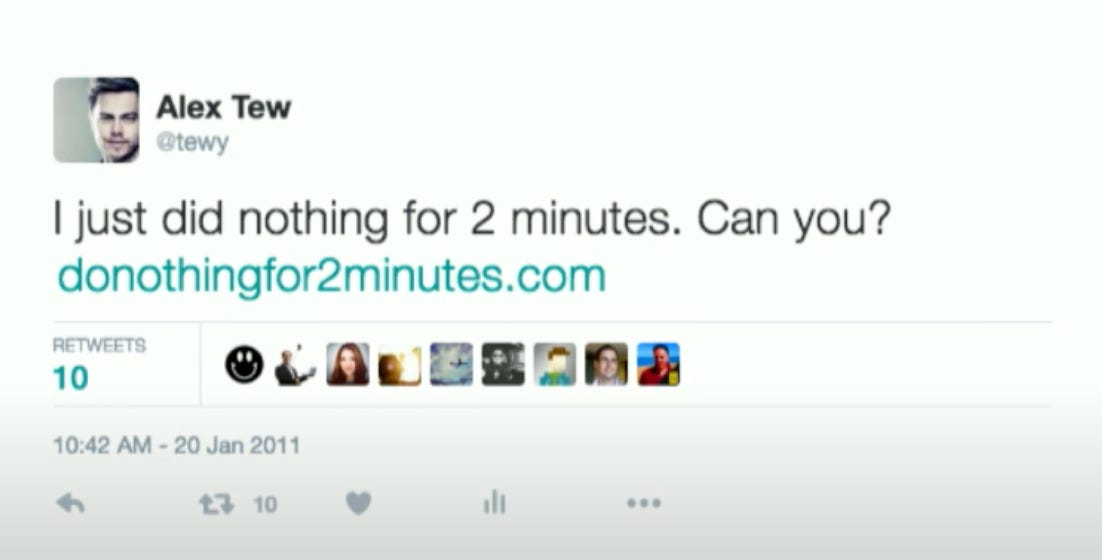🧘🏻Calm
Building a viral product
Hello folks 👋,
First of all, I would like to welcome the 618 new members to our little family 👨🏽🍼 since last week. Today's case study is on Calm.
Calm is one of those companies that seems obvious in hindsight. When they got started in 2012, there were already 20m American who practice meditations and the Semel Institute of Neuroscience and Human Behavior at UCLA had a modestly popular meditation audio-files you could download on your MP3 Player/iPod. It's not hard for me to imagine that a small portion of those 20m meditation practitioners would prefer to access constantly up-to-date content using an app/website as opposed to listening to the same 3-4 meditation audio files they had on their mp3 players over and over again, I know I would.
But when Alex Tew first came up with the idea of Calm, he had his eyes set on the 93% of Americans that didn't mediate. This goes against most, if not all, the 50+ case studies I have written about so far. For instance, When Conor from Roam was looking for his very first early adopters he looked for people who most exhibit the behavior that his app was meant to facilitate. Same goes to Jason Citron from Discord, Payal Kadakia from Classpass...etc. It wasn't until years later that these founders started investing the time, energy and resources to educate a mass audience on establishing a new habit through their offering.
In the case of Calm, Alex went after the mass audience from day 1, bypassing the common startup wisdom of finding "the right customers". He did so by building a website that had orders of magnitude more potential to go viral than Calm and used it as lead generation machine for his meditation website (the app would come a few months later). This website was http://donothingfor2minutes.com/.
Today we will explore:
What Alex built to get 100k signups before Calm launched?
How he went about the ideating and building this product?
Why did it work?
The What
I hope after reading this issue, many would agree that Alex Tew is perhaps among the top 10 product creators that ever lived. Right there with Elon Musk, Steve Jobs and Jack Dorsey. Alex's speciality was and has always been building products that go viral seemingly overnight. I put together a list of a few examples of such products that he worked on before his time founding Calm.
1. Million Dollar Homepage
In University, Alex built this website with the goal of "becoming a millionaire in two weeks." The idea was to sell 1 million pixels for $1 each. In 4 months he sold every pixel on the website netting him $1,037,000. The million dollar homepage was built in 2 days.
2. Sock and Awe
A game that Alex and his team built in 3 hours right after the George W. Bush shoe throwing incident. It got 9 million unique visitors in 7 days, after getting picked up by mainstream media all over the world such as The Telegraph and The Guardian.
3.and finally Do Nothing For 2 Minutes
Way before the Calm launch, Alex built this website where people were asked not to move their cursor or keyboard for 2 full minutes, otherwise the counter will start over. Again it got picked up by mainstream media as Techcrunch & CNN and got 2 million unique visits in 10 days while capturing 100k+ emails for Calm before it even was a product.
Looking at these 3 examples, there are a lot of commonality on what you need to build. It should be
Something that you can develop in a day or two
that can quickly grab the attention of mainstream media
and capture a small % of that media-induced traffic spike for your main product
The How
When thinking about how to execute on that strategy, there are a few things to consider:
How to come up with a viral idea
How to seed & grow your (potentially viral) product
How to grab mainstream media’s attention
Let's take a closer look into how Alex did it with Calm and Do Nothing for 2 Minutes 🧐
Coming up with a viral idea
When Alex was looking to validate the idea of building a meditation app via attempting to create a viral product the goal was to test the sentiment that people were more distracted than ever, and that this problem resonated with a large audience.
The criteria you want use to validate virality potential is
Being a little bit absurd (which lean themselves to social sharing)
Having a great name (makes it memorable and searchable)
Great name can be descriptive (ie Million dollar homepage, Do Nothing for 2 minutes)
Or they can be catchy, I personally love puns (ie Sock and Awe)
Doing something unexpected (ie Visiting a homepage to literally not do anything)
Simple to explain (can you pitch the whole concept in 1 sentence)
Seeding & growing your (potentially viral) product
When Alex built http://www.donothingfor2minutes.com he did not have the social following he did today. Instead, he had a few tricks up his sleeve
For Twitter (the first place he launched), he framed the launch as an automated tweet to make the website seem more prevalent than it actually was.
For Hackernews, he framed it as a challenge. Challenges are more intriguing than announcements
The Hackernews post landed him in #2 of the day and captured the attention of reporter Alexia Tsotsis that wrote a Techcrunch article about it the next day. This was the start of an intensive media coverage that included heavy weights such as Huffington Post, zdnet & CNN.
Grabbing mainstream media attention
To grab the media's attention you want reporters- who live on the internet - to stumble upon your product in the wild. More accurately you want them to stumble many times upon your product in a very short window of time.
The two things that worked for Alex in that regards
Social sharing that works: In this particular case, whenever I or anyone else visited the website, we were more likely to hit the share button. The main reason? Sharing was more of a social brag "I just completed this challenge can you?" and less of a favor "please help us reach more people." I personally feel that I don't owe app creators anything to do them a favor every time I use their app. I am sure many feel the same way ( 5% conversion is considered an above average share rate.)
Easy for reporters to contact him: Alex added CTA in the product "build by @tewy" which linked back to his Twitter. Anyone could then slide into his DMs without having to do any research on who created this project.
The Why
This is a lot harder to quantify. In 100 parallel universes, everything being kept the same I would bet this would've worked maybe 20-30 times. As is the case with going viral on Social Media, it is hard quantify, and a lot harder to predict.
This is why, if I was attempting to build a product with the exclusive motivation of going viral I would aim to spend not more than 6 hours working on the thing. High risk, High reward.
In the case of Do Nothing For 2 minutes, the reason why this worked was that it held a mirror at societal problem and highlighted in a fun shareable way. For Awe and Sock, the reason it worked was that it tapped into the zeitgeist at the time and highlighted it in a fun and shareable way. And for the Million Dollar Homepage it allowed people to own a small part of internet history and it did so in a fun and shareable way.
I am starting to feel a little bit of a pattern here 😐.
Until next Sunday,
Ali Abouelatta.





